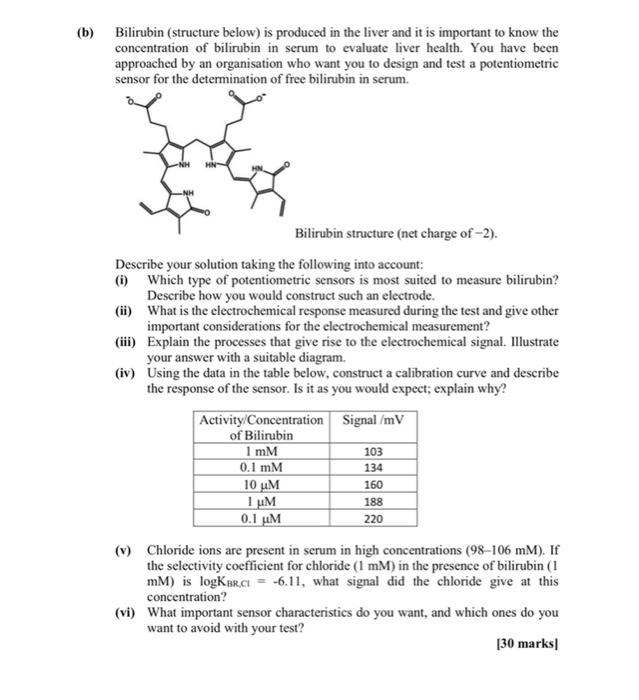Answered step by step
Verified Expert Solution
Question
1 Approved Answer
Analytical Question, confused on what electrode to use and the maths. b) Bilirubin (structure below) is produced in the liver and it is important to
Analytical Question, confused on what electrode to use and the maths. 
b) Bilirubin (structure below) is produced in the liver and it is important to know the concentration of bilirubin in serum to evaluate liver health. You have been approached by an organisation who want you to design and test a potentiometric sensor for the determination of free bilirubin in serum. irubin structure (net charge of 2 ). Describe your solution taking the following into account: (i) Which type of potentiometric sensors is most suited to measure bilirubin? Describe how you would construct such an electrode. (ii) What is the electrochemical response measured during the test and give other important considerations for the electrochemical measurement? (iii) Explain the processes that give rise to the electrochemical signal. Illustrate your answer with a suitable diagram. (iv) Using the data in the table below, construct a calibration curve and describe the response of the sensor. Is it as you would expect; explain why? (v) Chloride ions are present in serum in high concentrations (98106mM). If the selectivity coefficient for chloride (1mM) in the presence of bilirubin ( 1 mM ) is logKBR.Cl=6.11, what signal did the chloride give at this concentration? (vi) What important sensor characteristics do you want, and which ones do you want to avoid with your test? [ 30 marks] 
Step by Step Solution
There are 3 Steps involved in it
Step: 1

Get Instant Access to Expert-Tailored Solutions
See step-by-step solutions with expert insights and AI powered tools for academic success
Step: 2

Step: 3

Ace Your Homework with AI
Get the answers you need in no time with our AI-driven, step-by-step assistance
Get Started


